Ringgit has finally dropped 4.50 to a US dollar on Wednesday (Sept 7) – the lowest since January 1998, during the Asian Financial Crisis. The Malaysia currency plunged as much as 4.5038 before staging a rebound to 4.5017. As feared, once it breached the psychological 4.50 level, it would be difficult to return to previous level. At the current 24-year low, all hell could break loose.
The last time it breached the 4.50 level was in January 1997 when it hit 4.5002 milestones. Essentially, today’s Ringgit weakness is worse than when the country was plunged into the financial crisis close to a quarter century ago. On the surface, one can easily blame the stronger greenback for the weaker local currency. After all, other currencies suffer worse than Ringgit.
Ringgit can take comfort that on the same Wednesday, the British pound tumbled to its lowest level against the U.S. dollar since 1987. The Sterling dropped to US$1.1407 – a level not seen in 37 years. However, the British currency took a beating largely due to economic uncertainties after Liz Truss officially succeeding Boris Johnson as the new prime minister.
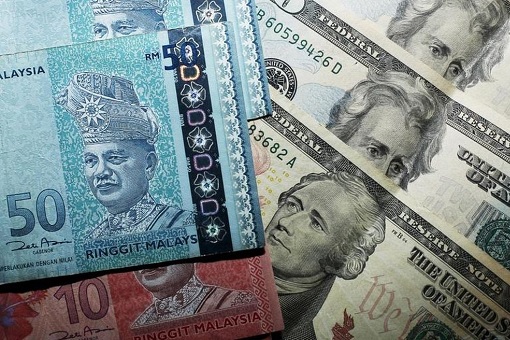
Not only the new British PM inherits an economy that saw inflation rate skyrocketed to its 40-year-high of 10.1% in July as rising food prices escalated, only 12% of Britons expect Truss to be a good or great leader (52% expect her to be poor or terrible). Her biggest challenge is to tackle a severe cost-of-living crisis due to soaring gas prices and increases on the National Health Service during winter.
But Malaysian Prime Minister Ismail Sabri does not face the same problems as Liz Truss. Malaysia is in a unique situation, where gas is supplied by Petronas (national oil company wholly owned by the government) at discounts to global market prices, while coal is fully imported and based on market pricing. Petronas has just announced an additional RM25 billion dividend payment to the government.
As the world’s second- largest producer of palm oil after Indonesia, the country has also benefitted from the global shortage of cooking oil. Malaysia’s inflation rate was merely 4.4% in July. Unlike the Western nations, the Malaysian economy registered a stronger growth of 8.9% in the second quarter of 2022, according to Bank Negara Malaysia (Central Bank).
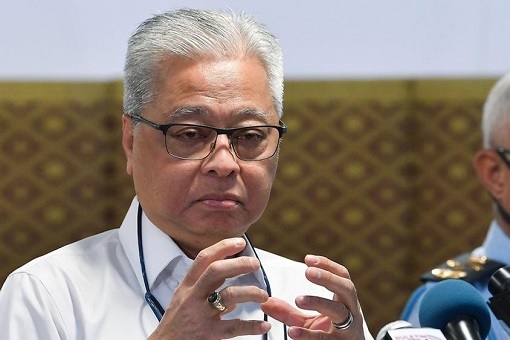
The un-elected government of Ismail Sabri has also bragged that the unemployment rate in June 2022 dropped to 3.8% – the lowest since the Covid-19 pandemic. The country’s most genius finance minister, Zafrul Abdul Aziz, has repetitively said the country’s financial situation remains strong and the economy is in the right direction. He also said GDP growth will definitely hit between 5.3% and 6.3% in 2022.
In comparison, even China, the world’s second largest economy, isn’t sure if its own economic growth estimation of 5.5% is achievable. The United States would be lucky if its economy could hit 2.5%. Likewise, the European Union economy is projected to grow by merely 2.7% this year. The United Kingdom’s GDP growth is expected to average between 3.1% and 3.6% in 2022.
According to the Asian Development Bank (ADB), Vietnamese GDP growth is predicted to be 6.5% year over year in 2022, making Vietnam the ASEAN nation with the fastest-growing economy. Even Singapore has narrowed its GDP growth forecast for 2022 to between 3.0% and 4.0%. This means if Malaysia could really achieve 6.3% growth, it would be the second fastest-growing economy.

However, there’s one problem with all the sexy numbers presented by the Malaysian government – investors have no confidence with them. For example, even though Petronas reported extraordinary profit due to high oil and gas prices, allowing it to give away RM54 billion in dividends to the government – its highest since 2019 – nobody knows what will happen to the money.
The money could be used to fund subsidies, which hit a whopping RM80 billion in 2022. It could be used to fund operating expenditure, which needed RM233.5 billion in the Budget 2022. It could be used on wasteful projects. It could also be misused to buy votes for the coming 15th General Election, as seen with the recent pay hike and cash aid for civil servants announced by PM Sabri.
The country could see opportunity losses as much as RM20 billion this year alone due to unrealized crop and palm products as a result of labour shortages. And the workers’ problem has been ongoing for the last 3 years, meaning Malaysia’s losses are about RM60 billion. As recently as July, the government admitted a shortage of 28,940 labourers, yet the problem still persists till today.

On average, unharvested fresh oil palm fruit – about 57,880 tonnes a day – have been left to rot because corrupt ministers, trying to enrich themselves over the labour shortage, could not agree how to fix a problem as simple as importing migrant workers to harvest the fruits. Despite assurance that 52,000 migrant workers are coming, only several hundreds have arrived largely due to slow government approvals.
After struggling for three years on the same unresolved issue, a lack of harvesters, mostly from Indonesia and Bangladesh, means the current peak harvest season (August to September) is going to waste again. Crucially, the losses of RM60 billion in exports mean the country has also lost foreign exchange gain – something that the backdoor government still doesn’t understand.
If a country exports more than imports, it means there is a high demand for its goods or products, therefore, its currency also appreciates. The simple economics of supply and demand says when demand is high, prices rise and the currency appreciates in value. Essentially, exports increase revenues, jobs, foreign exchange reserves and hence liquidity.
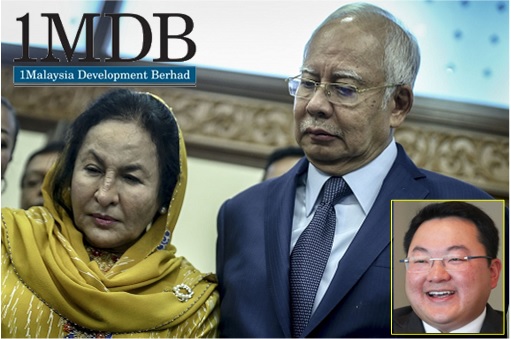
However, Malaysia isn’t progressing even when it possesses valuable commodities like oil and gas as well as palm oil. Instead of using the windfall dividends from petroleum to grow the economy, it is used to pay national debts (which ballooned to over RM1 trillion under previous Najib administration), subsidies, wasteful projects, a bloated civil service and ministers.
Instead of capitalizing on the high price of palm oil as a result of Ukraine war, it is running around like a headless chicken without clear leadership to solve the problem of worker shortages. To make matters worse, foreign investors are not attracted by the country’s policy on investment. Some policies were hastily made with political motives that have no relevance.
Malaysia has always been one of Southeast Asia’s top investment destinations for the past few decades. However, the Covid-19 pandemic and the emergence of backdoor Malay-centric government of Perikatan Nasional changes everything. In 2021, the United Nations Conference on Trade and Development (UNCTAD) released some figures that were incredibly humiliating.

Inflow of foreign direct investments (FDI) into Malaysia stunningly dropped by 68% from US$7.8 billion (RM31.5 billion) in 2019 to US$2.5 billion (RM10.1 billion) in 2020. While it’s true that FDI inflows to Southeast Asia contracted by 31% to US$107 billion in 2020 due to the Covid-19 pandemic, other countries in the region did not do as badly as Malaysia under Muhyiddin regime.
Malaysia was the worst performer in the region – attracting only 2.3% of total FDI in 2020. Singapore saw its FDI plunged by 37% and Indonesia fell 24%, while Thailand dropped by 50% and Vietnam lost by 10%. Surprisingly, Philippine saw its FDI increased by 29%. But Thailand’s massive contraction was due to divestment of a British company – Tesco – to Thai billionaire Dhanin Chearavanont for £8 billion (US$10.9 billion; RM44.3 billion).
Azmin Ali, Minister of International Trade and Industry (MITI), has claimed the country has attracted RM42.8 billion investments in the manufacturing, services and primary sectors involving 910 projects between January – March 2022. However, in the same period, the Department of Statistics Malaysia said foreign direct investment FDI posted only RM24.4 billion.
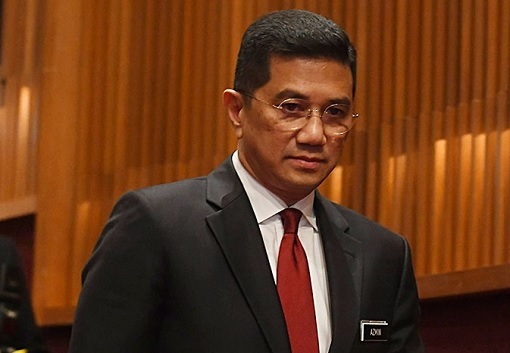
The Department of Statistics also revealed that in the first quarter, direct investment abroad registered “net outflow” of RM3.6 billion and shot up to RM14.7 billion in the second quarter (April – June 2022). Malaysia recorded a surplus of only RM4.4 billion (second quarter) and RM3.0 billion (first quarter). Either Azmin was cooking the numbers or investors are adopting wait-and-see approach.
All investors – both domestic and foreign – were spooked with the increase in prosperity tax from 24% to 33% for companies whose annual profit exceeding RM100 million. The policy, introduced during the Budget 2022, does not inspire, let alone encourage foreign investments. They would rather go or relocate to neighbouring countries like Singapore, Indonesia or Vietnam.
Hyundai, IBM Global Delivery Centre (GDC), Shell IT Operations, Citigroup, T-Systems, Toyota Motor, Tesla, Facebook, Lazada, Tencent, Byte Dance, Alibaba, Google, Microsoft, Facebook, PayPal and Zoom are just some of the big boys who have either relocated, exited or decided to invest in other countries, leaving Malaysia in droves. After leaving, chances are they would never come back.
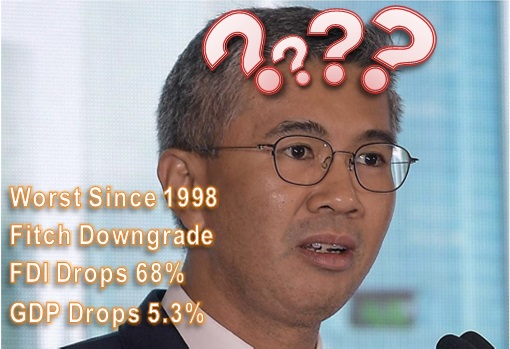
Investors have been watching with amusement the double standards, hypocrisy, comical flip-flopping, dubious annual budget, indecisive policies and whatnot that continues even after Ismail Sabri took over from Muhyiddin Yassin. For example, Finance Minister Zafrul Aziz warned that the Employees’ Provident Fund (EPF) may have to sell assets if a third round of withdrawals – estimated RM63 billion – were allowed.
Five months later, Zafrul made a U-turn and said no assets have been liquidated even after the massive EPF withdrawal. Where did the government get the money? The answer – printing money – as much as RM1.9 trillion – based M2/GDP ratio from Bank Negara Malaysia, where there was a huge spike of money supply against the country’s GDP (gross domestic product).
Malaysia has to spend RM77.3 billion this year – the highest in the history ever – to contain inflation. It’s not because the economy was booming and people have too much money to spend, which leads to increase in the prices of goods and services. Rather, the secret money printing scheme has led to a depreciation of Ringgit, reducing the currency’s purchasing power.

Adding salt to the wound, instead of appreciating against the greenback when the crude oil prices go up, as it usually did, the local currency seemed to have diverged or broke away from the crude oil trend in recent months. Even the rally in crude palm oil (CPO) has failed to help the local currency climb higher. The value of Ringgit gets lower and lower.
To prop the currency, the central bank has been burning foreign reserves to support the Ringgit. As a result, foreign reserves continued to shrink in 2022 – totalled US$109 billion as of June 30, a drop of US$3.6 billion from May 31 – the largest two-week fall since July 2015. It further dropped to US$108.2 billion as of August 30. It possessed US$116.9 billion at the beginning of the year.
Meaning this year alone, Sabri government had burned US$8.7 billion (RM39 billion) in foreign reserves to potentially support the currency. Yet, the Ringgit plunged from RM4.16 (January 2022) to the current RM4.50. It didn’t help that political instability and uncertainty continue as power-crazy Malay leaders from UMNO, Bersatu and PAS political parties are at each other’s throats.
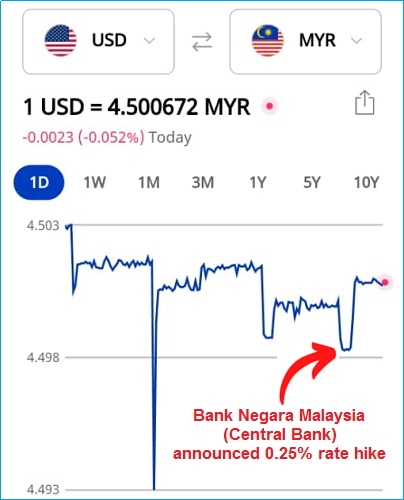
Amusingly, despite raising overnight policy rate (OPR) by 25 basis points to 2.50 today (Sept 8) – obviously to strengthen Ringgit – the currency only stayed momentarily at 4.498 before shooting above 4.50. Investors have absolutely no confidence in the local currency as the Federal Reserve is expected to raise its third consecutive 75 basis points later this month.
Not only foreign investors are avoiding the country with a 10-foot pole because of the potential risk of a national election, even local exporters are reluctant to convert foreign exchange earnings into Ringgit at a time when the local currency is weak. This puts even more pressure on Ringgit. The depleting foreign reserves also mean the government has limited bullets to support Ringgit.
Other Articles That May Interest You …
- Printing RM1.9 Trillion – Why Ringgit Could Breach 4.50 And Plunge Into A Free Fall As Investors Continue To Lose Confidence
- Too Little Too Late – Bank Negara Raises Interest Rate To Rescue Tumbling Ringgit Under Pretext Of Fighting Inflation
- Ringgit Hits 2-Year Low Of 4.36 Despite High Oil Price – How UMNO Leaders Destroy The Currency In The Last 25 Years
- 7 New Taxes That Najib & UMNO Plan To Introduce After They Win The 15th General Election
- From 30% To 51% Shares – Endless Racist Policies & Daylight Robberies Why Local Talents & Companies Fled Elsewhere
- Driving Investors Away – Prolonging Covid-19 Pandemic In Malaysia Threatens Global Semiconductor Supply Chain
- Karma!! – Muhyiddin Cries & Lies Even After Resign, From Plotting With Crooks To Killing 13000 People To Achieving 0% GDP
- Congrats Muhyiddin! – Here Are The Letters From German, Japanese And Dutch Investors Threatening To Pull Out
- PM Declares Country Almost Bankrupt – Here’s Why PN Crooks Could Have Siphoned Hundreds Of Billions Of Ringgit
- The Worst Is Yet To Come – Muhyiddin’s Mishandling Of Covid-19 & Mismanagement Of Economy Is Worse Than Trump
- Printing Money – The Stupid Backdoor Deputy Minister Who Thought Malaysia Ringgit Is As Powerful As US Dollar
- Get Ready For Bad Time Ahead! – As Malaysia’s Economy & Corporate Debt Get Worse, Retrenchment Has Just Begun

|
|
September 8th, 2022 by financetwitter
|


|

|

|

|

|

|











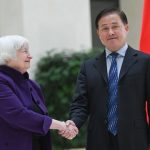
















Comments
Add your comment now.
Leave a Reply